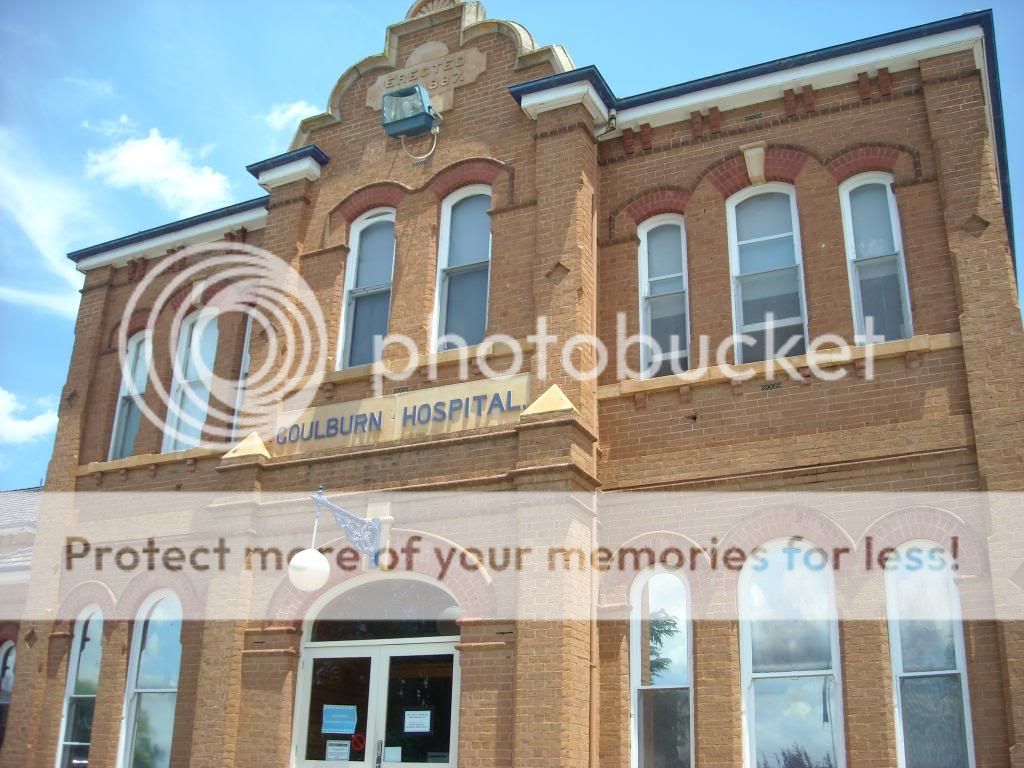Characteristic of Goulburn, set in a low wide plain and world famous for its fine wool production are its wide, tree-lined streets and mixture of architecture.
Looking over Goulburn on a 35C (100F) summer's day last week.
Looking up Clifford Street
Montague Street
Sloane Street
The type of built environment extends from the early 1800's:
Modernised as a medical centre
Boutique housing
To the slightly more colourful boarding house accommodation.
and later the more modern hospital was added:
In its early days many fine mansions were built on the proceeds of industry and 'wool cheques'. It is a sad indictment that many of these historic buildings were allowed to be demolished, or, to fall into a state of disrepair rendering them unihabitable. This one is currently undergoing restoration:
The railway station in Sloane Street - many of the railway buildings
and other significant buildings in Sloane Street were preserved
as part of the 'National Trust' estate.
and
Of course, around the hospital parking is a premium:
But can come at a cost as cockatoos feed on the pine cones of the large shade trees:
This one fell on the engine bonnet of the car in which I sat waiting for a client to return.
Rocky Hill is so-called for rather obvious reasons and one can see where the stone required for the construction of the War Memorial Tower was obtained:
Goulburn is a provincial city in the Southern Tablelands of New South Wales, Australia in Goulburn Mulwaree Council Local Government Area. It is located 195 kilometres (121 mi) south-west of Sydney on the Hume Highway and 690 metres (2,264 ft) above sea-level. On Census night 2006, Goulburn had a population of 20,127 people. It brands itself as "Australia's first inland city", although this is a claim that the city of Bathurst also makes.
Goulburn was named by surveyor James Meehan after Henry Goulburn, Under-Secretary for War and the Colonies, and the name was ratified by Governor Lachlan Macquarie. The Aboriginal name for Goulburn is Burbong, a Murring/Wiradjuri word indicating a special Indigenous cultural area. Several native burial grounds have been uncovered during construction of housing developments around Goulburn, the native custom of the time being to bury the deceased in shallow unmarked graves, usually on the side of a hill over-looking the plains.
Goulburn is a railhead on the Main Southern line and service centre for the surrounding pastoral industry and a stopover for those travelling on the Hume Highway. It has a central park and many historic buildings, including old houses near the railway station on Sloane Street and two 19th-century cathedrals. It is home to the Big Merino, the world's largest concrete sheep.





















2 comments:
What an interesting city and what a fantastic sheep statue. :)
love the sheep!
Post a Comment